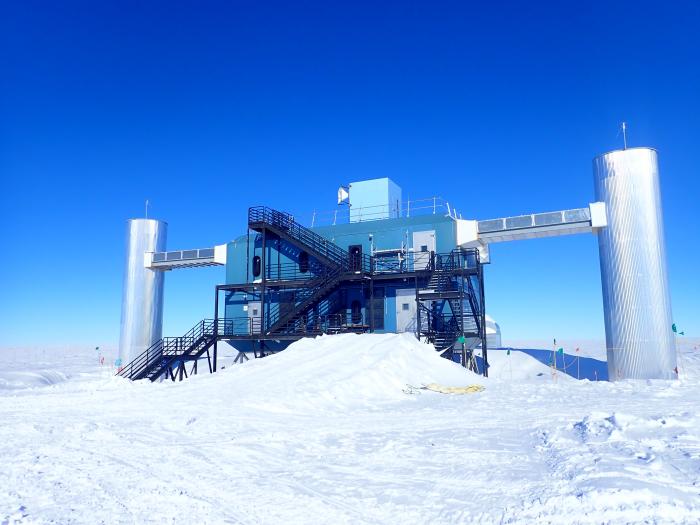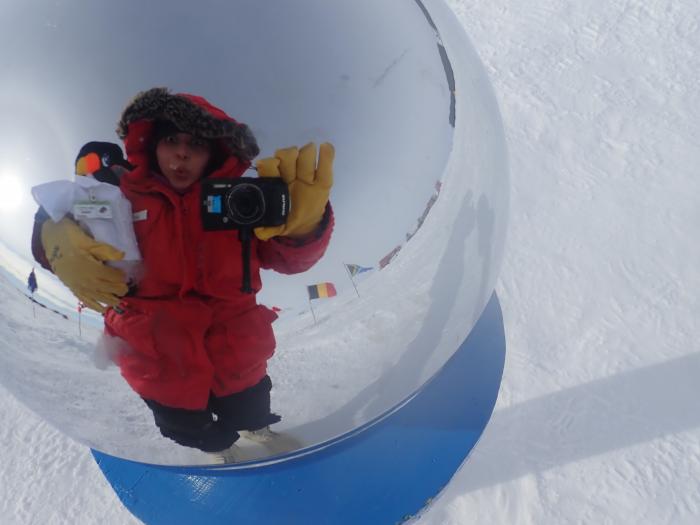The PolarTREC Field Experience
The PolarTREC Field Experience is amazing! PolarTREC (Polar Teachers Researchers and Educators Exploring and Collaborating) matches polar researchers with educators to highlight, and increase accessibility to, the science happening in some of the most fascinating places on our planet—the Arctic and Antarctic regions. It is an opportunity for educators to be completely immersed in the culture of a research team and for scientists to share their everyday work, often in new ways and to different audiences. The field experience uniquely highlights that science extends much further than a traditional laboratory and the PolarTREC educator gets to learn first-hand how science is done in extreme environments.
I was matched with the IceCube Neutrino Observatory at the South Pole and during my expedition, I learned all about neutrinos, physics, data loggers, digital optical modules, and much, much more. I also got to ride a snowmobile at 4 am in daylight. I got to shovel snow at our research site at over 9,000 feet elevation in temperatures of -35 degrees Fahrenheit. I walked to the laboratory wearing 20 pounds of extreme cold-weather gear. I got to troubleshoot last-minute problems in the coldest cold I’ve ever felt. I came to understand and deeply respect all of the amazing work that comes out of the South Pole, despite the harsh conditions.
The Importance of Educator/Researcher Collaborations
The collaboration between educator and researcher is essential to making real-world science accessible from the field to the classroom and into the community. Teaching rooted in first-hand experience is instantly more interesting, meaningful and credible. It allows the educator to internalize the experience and connect it to the resources that best reach their audiences. PolarTREC encourages scientists to embrace educators as part of the research team and from my experience, it inspired me to become invested and passionate about the science we represent. As a result, my teaching is now fueled by the same passion. On the researcher side, working with an educator gives the researcher insight into the variety of ways their work can be communicated. It also creates a bridge to make the parts of the project that are most often misunderstood by the general public, more accessible.
Summary of the Science, or The Science Explained
The IceCube Neutrino Observatory is a cubic kilometer volume of incredible clear South Pole ice with over 5,000 neutrino detectors frozen between depths of 1.4 and 2.4 kilometers below the surface. The transparent ice allows for detection and quantification of light from when an invisible neutrino interacts and produces secondary particles and ultimately the detected light.
A neutrino is a near mass-less subatomic particle that is born when particles change identities. This can happen in radioactive decay (your body produces about 200 million neutrinos per day from radioactive potassium), fission, fusion, or from collisions of high energy protons and heavier ions from events like supernovas, regions around black holes, and possibly gamma ray bursts. Neutrinos will travel in a straight line in one direction, undisturbed, for most of their existence. In rare instances, neutrinos will interact with a proton or neutron. This produces electrically charged particles that generate light from interactions with the ice that is picked up by the IceCube sensors. The direction and intensity of the light provides valuable information for scientists to understand the origin of these neutrinos such as their direction and energy. By knowing where these neutrinos come from, we can begin to map high-energy events in the universe. IceCube is currently in an upgrade phase with the goal of increasing the number of detectors so that lower energy neutrinos can be detected and characterizing properties of the ice to better understand how light moves through it.
Learning about the ice (SPICE Core)
The goal of SPICE Core is to study different properties of the ice by deploying specialized devices into an open ice hole 1.75km in depth. This was the main project collecting data for the upgrade this season. These specialized devices are measuring properties such as light scattering and how well radio frequencies travel through the ice.
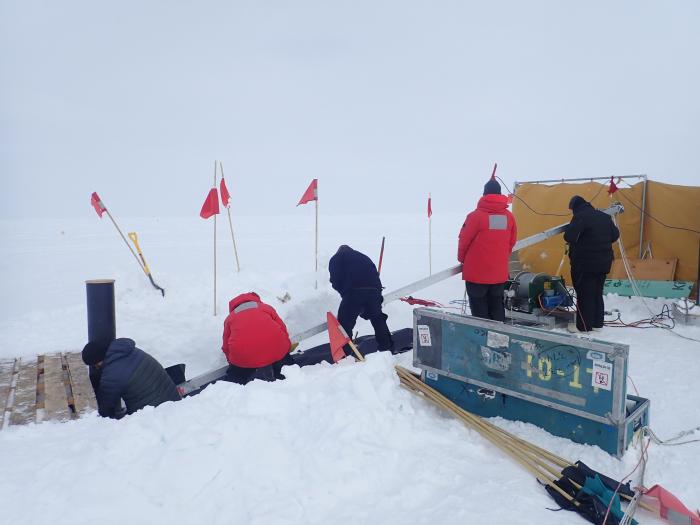
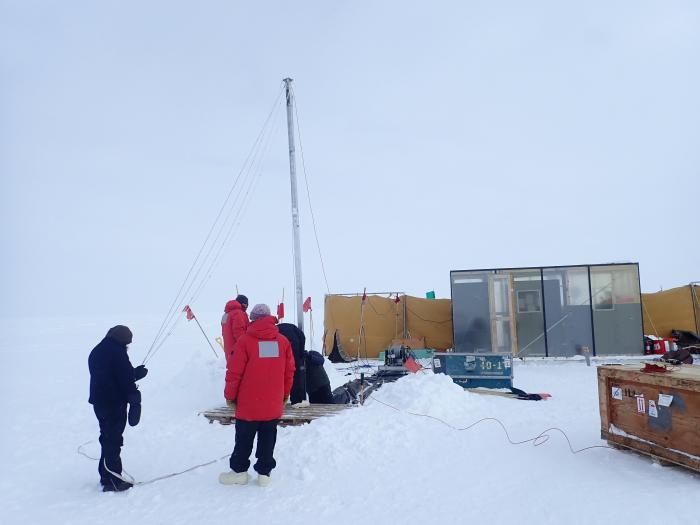
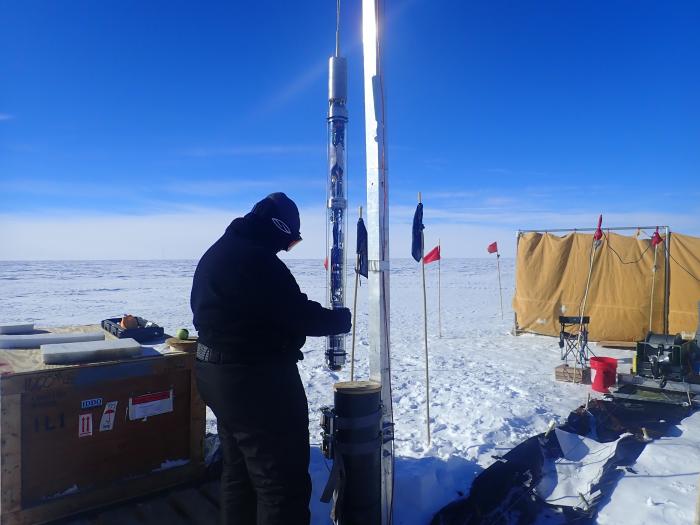
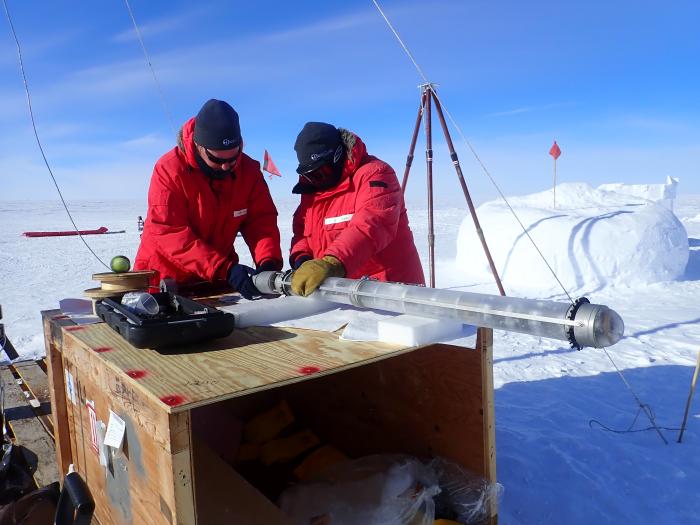
Drill Camp Set-Up
One of the goals of the Upgrade project is to drill seven new holes for seven new strings of sensors. These holes will be inside DeepCore, a section of IceCube where the sensors are more closely spaced both vertically and horizontally. DeepCore makes it possible to measure low-energy neutrinos. The actual drilling for the Upgrade won’t take place for another three years. The seasons leading up to it, including this season, are being used to test and renovate the drilling system that was last used by IceCube in the 2010-11 season.
Bringing the Science Back to my Classroom/Audience/Institution and Community
The PolarTREC experience gave me a powerful message to bring back to the community. Not only do I get to share the incredible logistics of getting to the South Pole, but I can inspire students by showing them a different side of science they may never have considered. The IceCube Neutrino Observatory is such a unique way to apply a science degree and it is important for the next generation to know that these types of careers exist. Thanks to this opportunity, I will also be able to discuss the different roles scientists play at the South Pole and how different science is in the field than in a laboratory.
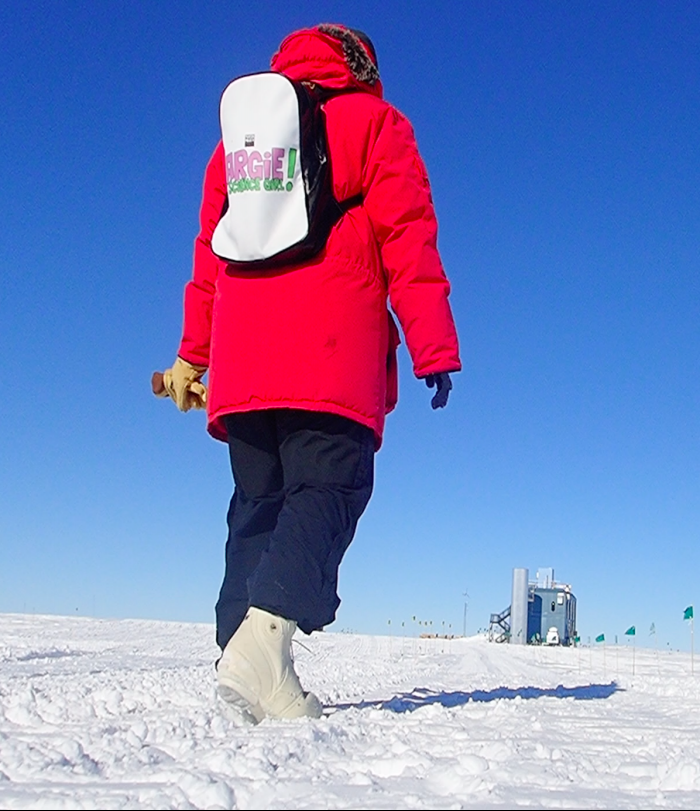
Through my main outreach platform of the science show “Jargie the Science Girl,” I have an audience of students between the ages of 5-12. During my expedition I was able to acquire multimedia content for future shows and talks around the community. I was also active on the PolarTREC blog, Jargie social media platforms, and mailed postcards from the South Pole station. Between Facebook and Instagram, our posts about the South Pole had a reach of 19,714 people. On December 13, we also hosted a live webinar for 137 teachers and students.
Post-Expedition Plans
My immediate plans include:
- Incorporate video explaining 24 hours of sunlight into a performance of “Jargie the Science Girl” in Torrance, CA for over 500 students
- Speak about the PolarTREC experience to libraries in Los Angeles. I am already coordinating dates with three library branches
- Create a free, downloadable activity guide for students in grades 1-3 about the South Pole and IceCube
- Submit to upcoming science teachers conferences as a presenter or workshop leader
*This program is supported by the National Science Foundation under award 1918637. Any opinions, findings, and conclusions or recommendations expressed by this program are those of the PIs and coordinating team, and do not necessarily reflect the views of the National Science Foundation.
| Attachment | Size |
|---|---|
| Download Report1.89 MB | 1.89 MB |
This program is supported by the National Science Foundation. Any opinions, findings, and conclusions or recommendations expressed by this program are those of the PIs and coordinating team, and do not necessarily reflect the views of the National Science Foundation.


